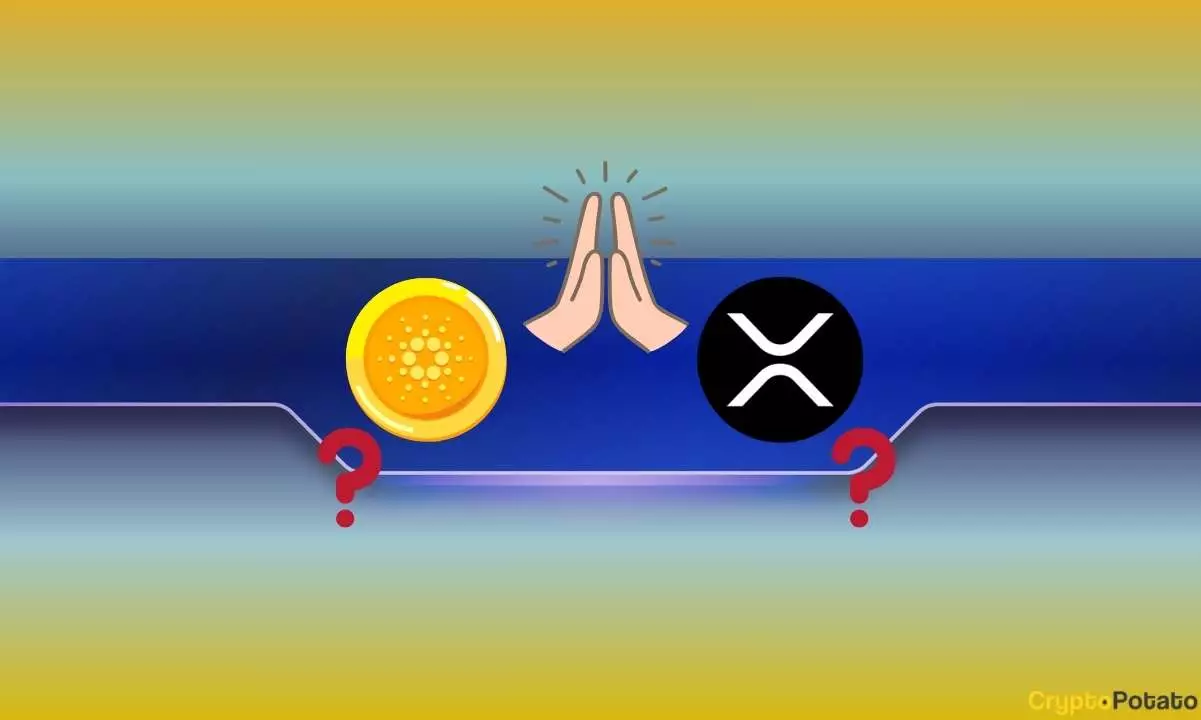The evolving landscape of cryptocurrencies has witnessed a noteworthy shift recently, particularly with discussions hinting at a potential collaboration between two heavyweight players: Cardano and Ripple. Charles Hoskinson, the founder of Cardano, has expressed a renewed interest in forming a partnership with Ripple, especially in light of his recent conversation with Brad Garlinghouse, Ripple’s CEO. This interaction, characterized by mutual respect and a shared vision for a collective crypto future, raises hopes within the community for synergy between their ecosystems.
Historically, Hoskinson’s stance on XRP and the Ripple community has been tumultuous, marked by criticism that painted the Ripple community in an unfavourable light. In 2022, Hoskinson branded the Ripple community as “toxic and petty,” a statement not taken lightly by its advocates. However, in a surprising twist, Hoskinson publicly apologized for his past remarks, reflecting a significant philosophical change. This shift signifies not only personal growth for Hoskinson but also a strategic pivot that recognizes the value of collaboration over competition.
Adding fuel to the rumors of partnership, Hoskinson’s recent dialogue with Ripple’s Chief Technology Officer, David Schwartz, focused on exciting technological possibilities. The discussion centered around Midnight, a privacy-focused sidechain under the Cardano umbrella. Schwartz’s enthusiasm after the conversation signals a profound mutual interest in exploring technologies that could benefit both ecosystems. This interaction suggests that both parties recognize the significance of privacy and advanced technology in the evolving crypto landscape—an area of shared innovation that could bolster their platforms.
The context of these discussions cannot be overlooked; regulatory clarity remains a crucial issue for the entire crypto sector. Hoskinson’s commitment to aiding the Trump administration in establishing a more functional regulatory framework for cryptocurrencies, paired with Garlinghouse’s rumored efforts for similar regulatory dialogues, positions both campuses as pivotal players in the sector’s future. The prospect of collaboration on regulatory matters could strengthen their positions against current industry challenges and establish a united front in advocating for favorable frameworks.
The warming of relations between Cardano and Ripple might signal a broader trend of solidarity in the cryptocurrency community as a whole. Echoing sentiments from both leaders, there is a growing awareness that the crypto landscape is more effective when collaboration trumps competition. The ability to build bridges and work together signifies a maturation in the industry, urging projects and their respective communities to unite for a common cause that is greater than individual agendas.
As speculation about a partnership between Cardano and Ripple continues to swirl, the industry may well be witnessing the beginning of a collaborative wave that prioritizes mutual growth over historical divisions. While only time will tell if Hoskinson and Garlinghouse’s discussions will translate into a formal partnership, the steps already taken towards dialogue signal a positive direction. For the crypto community, this could represent not just a unification of two frameworks but a broader resurgence in cooperative efforts that will shape the future of the sector in unprecedented ways.



Leave a Reply